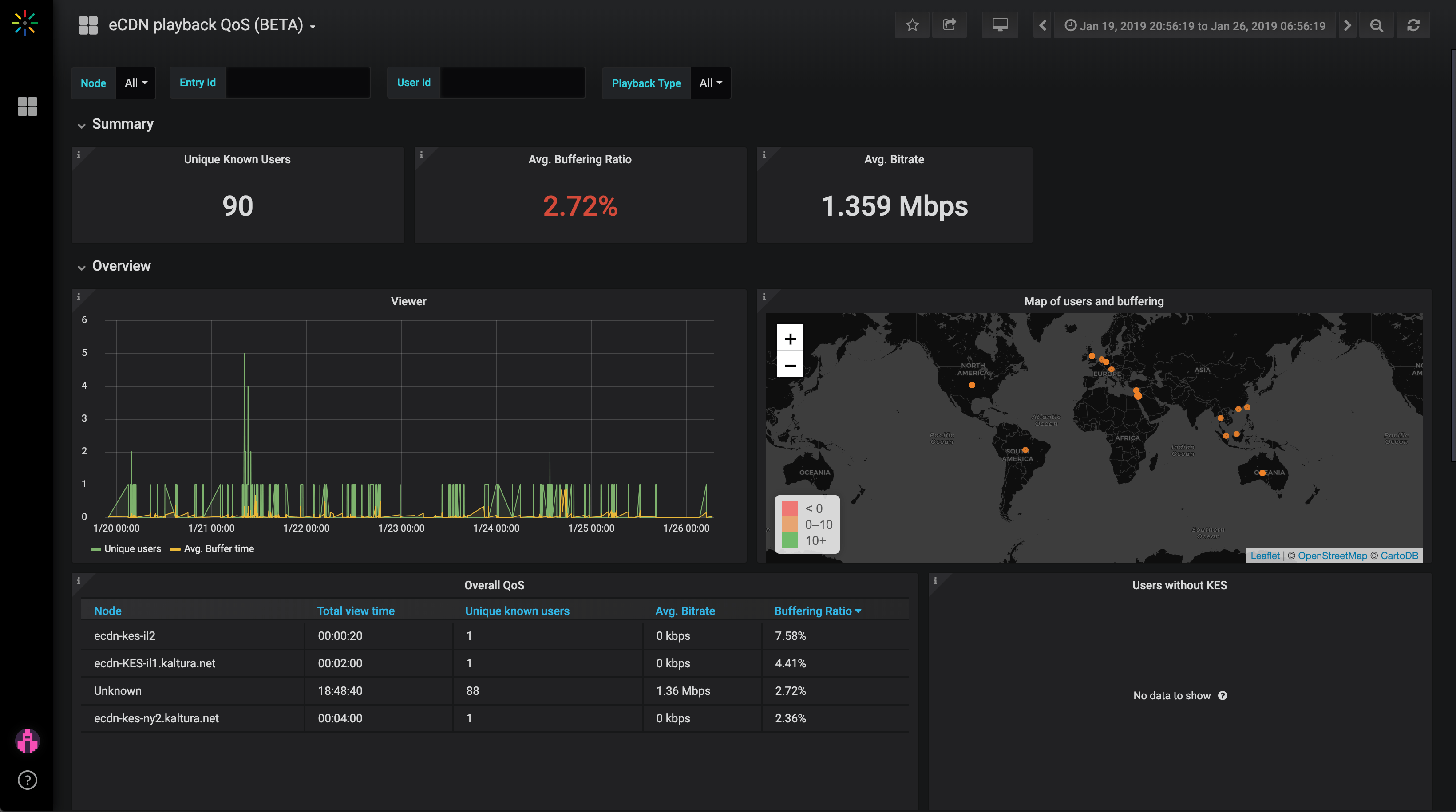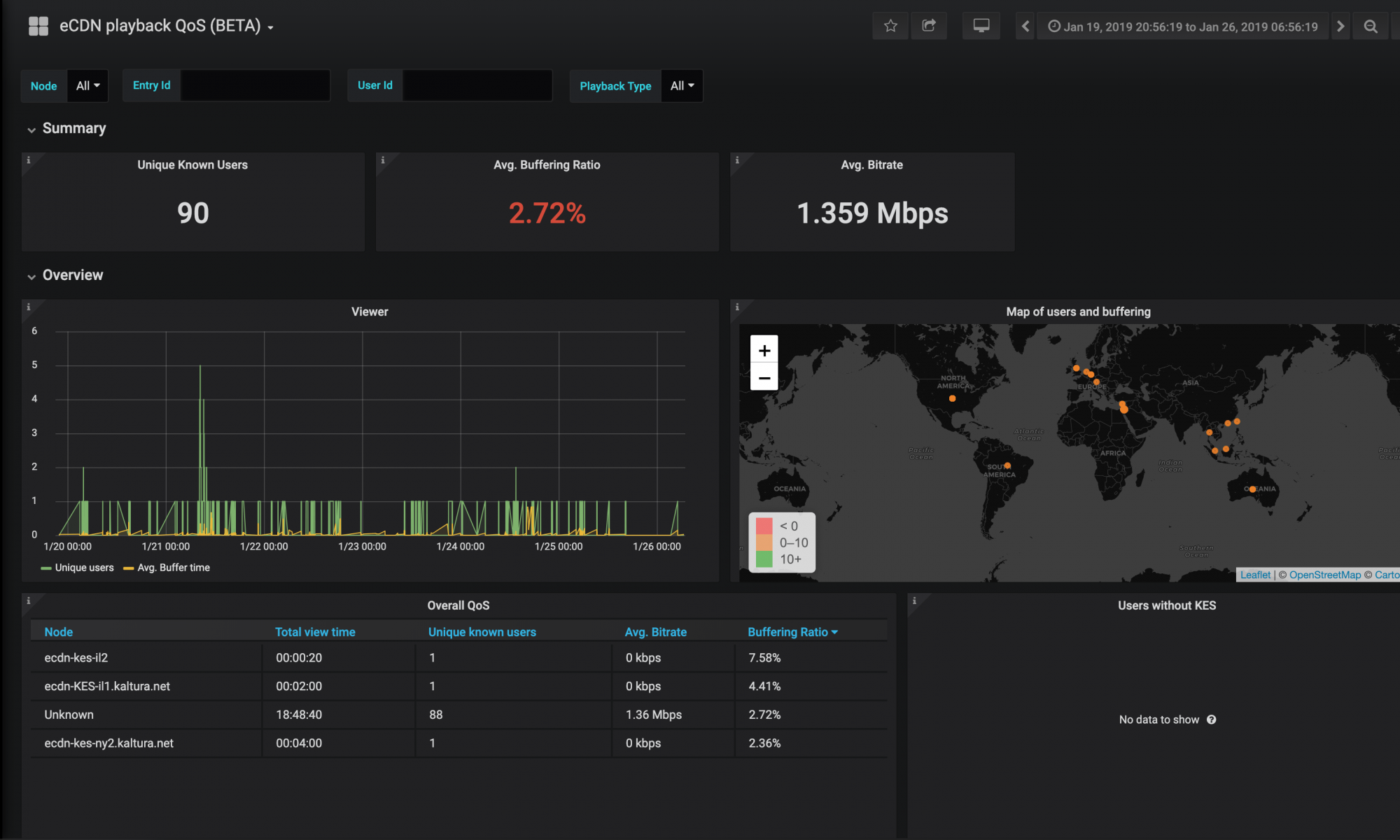You may not be familiar with Kaltura‘s name, but chances are you’ve used the company’s video platform at some point or another, given that it offers a variety of video services for enterprises, educational institutions and video on demand platforms, including HBO, Phillips, SAP, Stanford and others. Today, the company announced the launch of an advanced analytics platform for its enterprise and educational users.
This new platform, dubbed Kaltura Analytics for Admins, will provide its users with features like user-level reports. This may sound like a minor feature, since you probably don’t care about the exact details of a given user’s interactions with your video, but it will allow businesses to link this kind of behavior to other metrics. With this, you could measure the ROI of a given video by linking video watch time and sales, for example. This kind of granularity wasn’t possible with the company’s existing analytics systems. Companies and schools using the product will also get access to time period comparisons to help admins identify trends, deeper technology and geolocation reports, as well as real-time analytics for live events.

“Video is a unique data type in that it has deep engagement indicators for measurement, both around video creation – what types of content are being created by whom, as well as around video consumption and engagement with content – what languages were selected for subtitles, what hot-spots were clicked upon in video,” said Michal Tsur, President & General Manager of Enterprise and Learning at Kaltura. “Analytics is a very strategic area for our customers. Both for tech companies who are building on our VPaaS, as well as for large organizations and universities that use our video products for learning, communication, collaboration, knowledge management, marketing and sales.”
Tsur also tells me that the company is looking at how to best use machine learning to give its customers even deeper insights into how people watch videos — and potentially even offer predictive analytics in the long run.
Source: Tech Crunch


